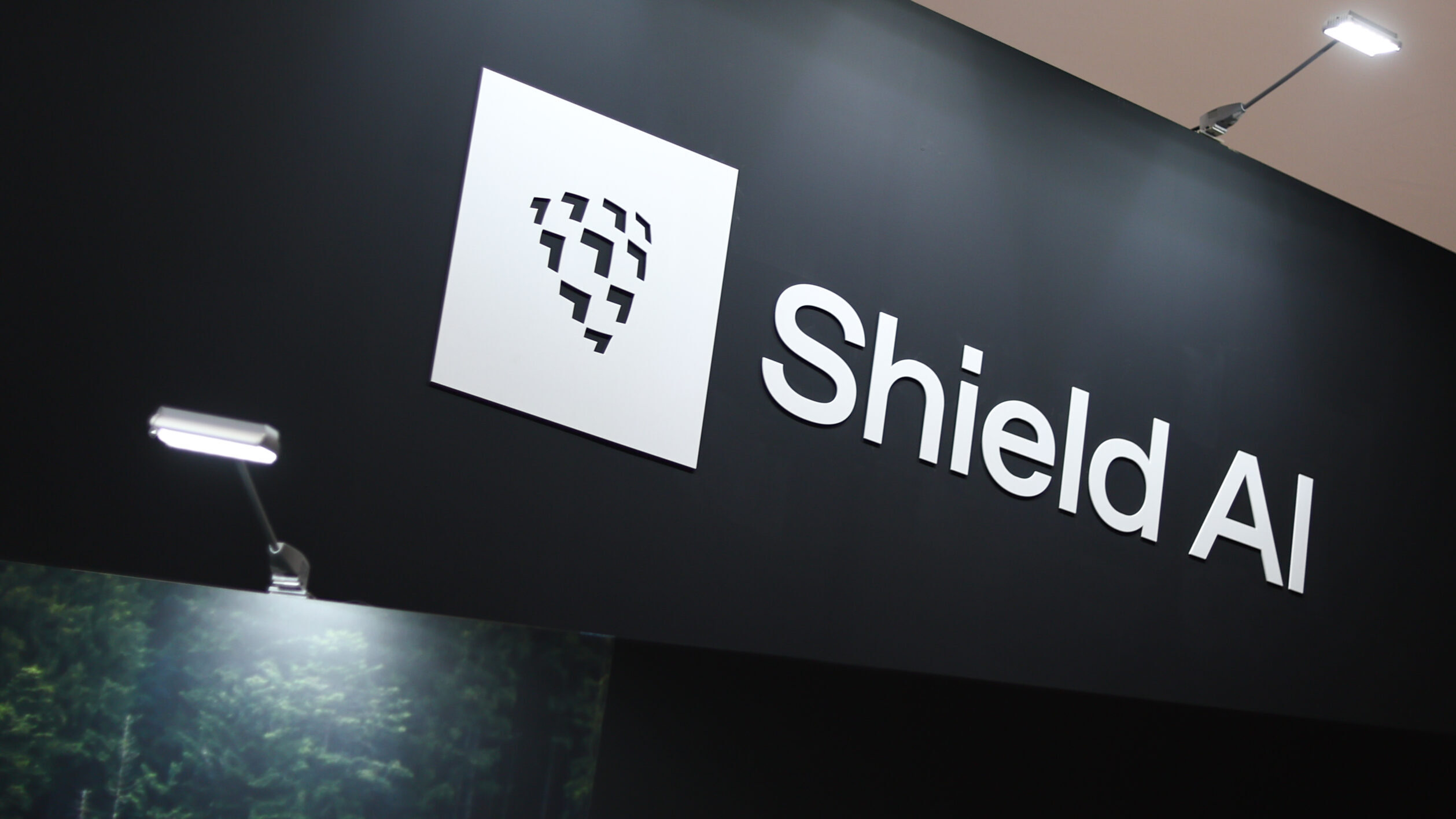
Shield AI logo is seen during defense industry exhibition in Kielce, Poland on September 3, 2024. (Photo by Jakub Porzycki/NurPhoto via Getty Images)
WASHINGTON – Venture-funded tech firm Shield AI and traditional defense prime RTX announced today they were teaming up to put Shield software on RTX hardware.
The release touts two collaborative projects, a sensor package and an “operational weapon.”
“This collaboration reflects how the defense ecosystem is evolving — bringing the best of autonomy and hardware to bear on national security challenges,” said Shield’s new CEO, Gary Steele, in a press release point out by both firms this morning.
The companies were cagey about the “operational weapon” project, declining to answer follow-up questions from Breaking Defense, including about how much the companies are spending on these new efforts. The press release just says “RTX will integrate Shield AI’s Hivemind to field the first operational weapon powered by Networked Collaborative Autonomy (NCA) – a breakthrough technology that fuses real-time coordination, resilience and combat-proven firepower. This work will be fully funded by the companies, without the need for government investment.”
However, Shield AI has already released a lot of information on Hivemind, one of their flagship products, which the company calls its “AI and autonomy stack.” In layman’s terms, that means it’s supposed to be a comprehensive package of AI tools and other software that can be installed on a wide range of different unmanned systems, operating on land, sea, or air — or potentially coordinating different robots working in all of these at once.
Hivemind enables the Pentagon’s preferred approach of “human-machine teaming,” a carefully chosen halfway point between old school remote control — such as the Predator drone, where two human crew dictate every action the aircraft takes — and sci-fi-style total autonomy, a Skynet-like AI that can make all the decisions on its own. The goal here is to have the humans set the objectives and give the orders, but for the AI to handle the details on its own, without needing time-consuming micromanagement via an always-on, long-distance radio link that potential enemies can detect and jam.
Shield AI built Hivemind as an highly customizable, mission-agnostic system, capable of plugging in new software modules for different tasks, environments, and types of unmanned systems. It even has a slimmed-down “Hivemind Edge” version to operate on frontline systems where computing power is limited, communications are intermittent, and GPS is rarely available.
RELATED: Trained on classified battlefield data, AI multiplies effectiveness of Ukraine’s drones: Report
However, to date, the only specific systems Shield AI has mentioned testing Hivemind on are all air vehicles, They include its own V-Bat drone, the Kratos MQM-178 Firejet, the General Atomics MQ-20 Avenger, and even an experimental version of the usually-manned Lockheed F-16 fighter, known as VISTA. So it’s probable, though hardly certain, that RTX’s undisclosed “operational weapon” is another unmanned aerial vehicle. (Shield did previously announce plans to roll out a new unmanned aerial vehicle come the fall.)
The second Shield-RTX joint project is more clearly described.
Shield makes a more modest software package, called Visual Detection And Ranging. ViDAR can simultaneously control and coordinate multiple cameras of different types, both electro-optical and infra-red, to detect anything from military targets to drowning sailors on water or on land. Meanwhile, Raytheon builds a vast array of different sensor pods and turrets, including the widely used Multi-Spectral Targeting System (MTS), with over 3,000 units in 44 different sub-types installed to date on a score of different manned and unmanned aircraft.
Under the new partnership, RTX will now put Shield’s ViDAR on its MTS turrets, particularly to “enable automated AI-based sensor autonomy against maritime and airborne swarm targets” — in other words, to better track and detect incoming enemy drones and unmanned attack boats. While this software would presumably be available on newly built MTS, the press release says the “focus” is installing ViDAR on already-installed MTSs as an upgrade.
That ability to add new capabilities to existing systems by installing new software, frequently and rapidly, on existing hardware is critical to the Pentagon’s near-term modernization plans. While would-be revolutionaries in military affairs call for a radical shift in Defense Department budgets to low-cost unmanned systems, and the Pentagon is indeed prototyping unmanned fighter jets like the Collaborative Combat Aircraft, the vast majority of US weapons were built decades ago, with many mainstay designs dating to the Reagan buildup or before.
The only way to bring these “legacy” systems into the age of AI is through lots and lots of upgrades — of which this new joint venture is just one example.






